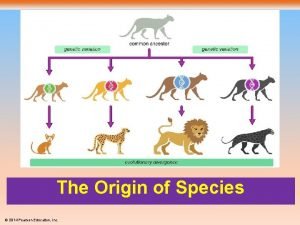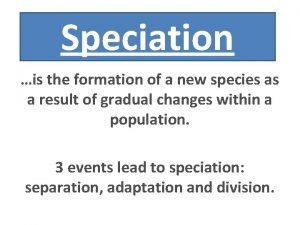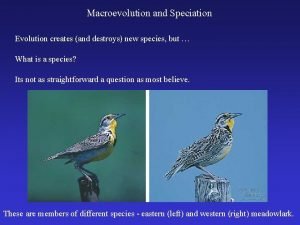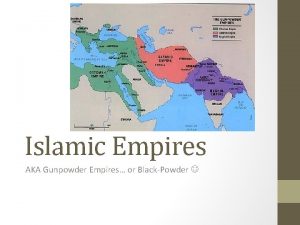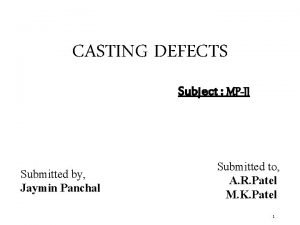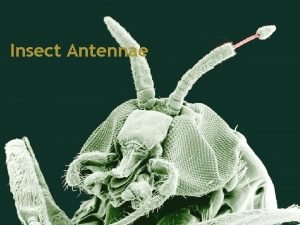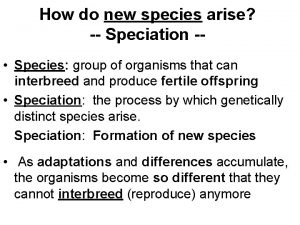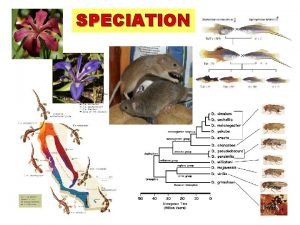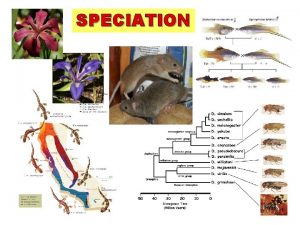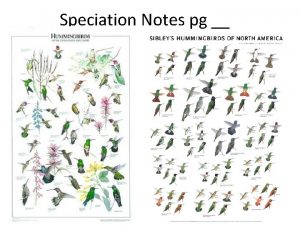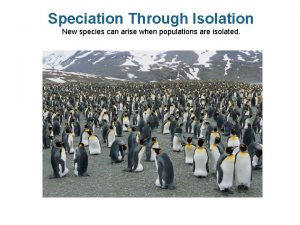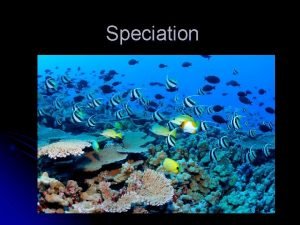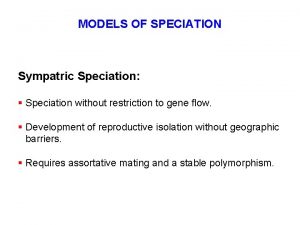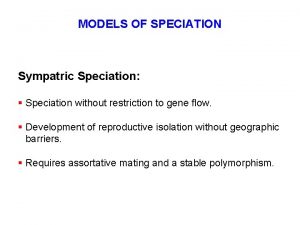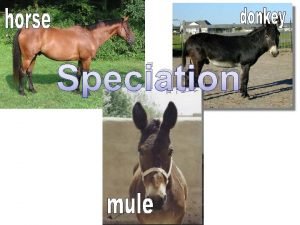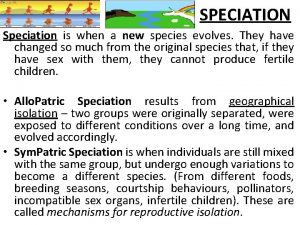Speciation How do new species arise Learning Goal















- Slides: 15

Speciation How do new species arise? Learning Goal: I will be able to define the concept of speciation, and explain the process by which new species are formed (including prezygotic and postzygotic reproductive isolating mechanisms, and allopatric and sympatric speciation)

Scale of Evolution � Microevolution consists of changes in allele frequency in a population over time � Macroevolution refers to broad patterns of evolutionary change above the species level

What is a species? �Species - a group of interbreeding individuals that share a gene pool and are reproductively isolated from other species.

What is speciation? � Speciation - the mechanism by which a new species is formed. REPRODUCTIVE ISOLATION must be present. � Two types of reproductive isolation are: 1. Prezygotic 2. Postzygotic � Two types of speciation are: 1. Allopatric speciation 2. Sympatric speciation

PREZYGOTIC BARRIERS Block fertilization from occurring by: ◦ Impeding different species from attempting to mate ◦ Preventing the successful completion of mating ◦ Hindering fertilization if mating is successful ◦ 5 types of prezygotic barriers © 2011 Pearson Education, Inc.

Prezygotic barriers Habitat Isolation Temporal Isolation Individuals of different species (a) MATING ATTEMPT (c) (d) (b) Gametic Isolation Mechanical Isolation Behavioral Isolation (e) (f) FERTILIZATION (g)

POSTZYGOTIC BARRIERS Prevent the hybrid zygote from developing into a viable, fertile adult: ◦ Reduced hybrid viability ◦ Reduced hybrid fertility ◦ Hybrid breakdown © 2011 Pearson Education, Inc.

Postzygotic barriers Reduced Hybrid Viability Reduced Hybrid Fertility Hybrid Breakdown VIABLE, FERTILE OFFSPRING FERTILIZATION (h) (i) (j) (k) (l)

1. Allopatric speciation �Occurs when two populations are geographically isolated from one another. They are separated by distance or an impassable barrier. �Allopatric (allo = other, patric = place)


Allopatric speciation �Occurs when a physical barrier cuts a breeding population in two. �Example: Grand Canyon squirrels Kaibab squirrel Abert squirrel

2. Sympatric speciation �New species develops when members of a population develop a genetic difference that prevents them from reproducing with members of the original species. �Sympatric (sym = same, patric = place)

Sympatric Speciation �Occurs due to reproductive isolation. �Reproductive isolation may be caused by: A) Pre-mating isolating mechanisms �Example: - Behavioural rituals - Differing mating seasons B) Post-mating isolating mechanisms �Example: - prevention of insemination - offspring may be sterile

Example: Apple maggot flies.

Speciation HOW DID WE DO? Learning Goal: I will be able to define the concept of speciation, and explain the process by which new species are formed (including prezygotic and postzygotic reproductive isolating mechanisms, and allopatric and sympatric speciation)
 Describe the conditions under which new species may arise.
Describe the conditions under which new species may arise. Speciation, or the formation of new species, is
Speciation, or the formation of new species, is Isolating mechanism
Isolating mechanism Keystone species in desert
Keystone species in desert Arise and shine communication
Arise and shine communication How did the ottoman safavid and mughal empires arise
How did the ottoman safavid and mughal empires arise Price is greater than marginal cost in monopoly
Price is greater than marginal cost in monopoly Stolen infinitive
Stolen infinitive Why do territorial conflicts arise among religious groups
Why do territorial conflicts arise among religious groups Why might fishing disputes arise in the region?
Why might fishing disputes arise in the region? Oh church arise
Oh church arise Let praise arise
Let praise arise Panchal cast
Panchal cast Yeats lake isle
Yeats lake isle Aristate antenna
Aristate antenna Arise to greet the lord of light
Arise to greet the lord of light
